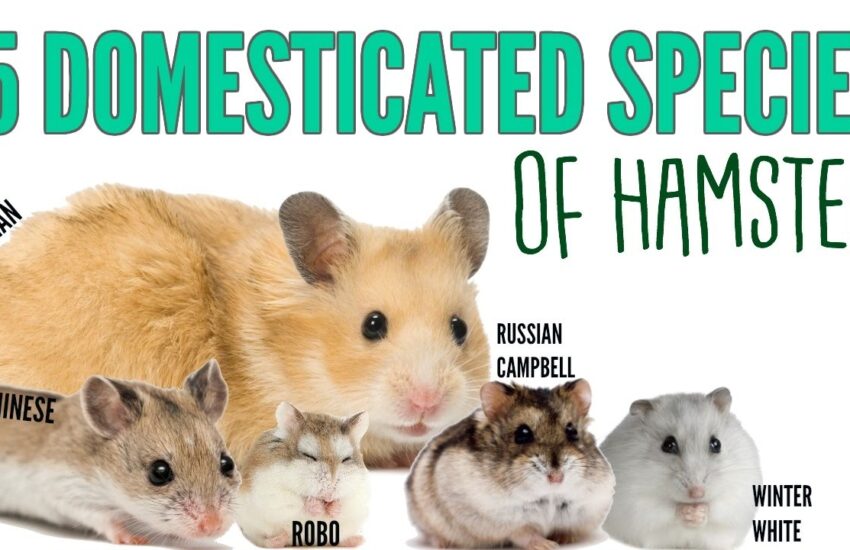The Ultimate Hamster Breed List
If you’re considering getting a hamster as a pet, understanding the various hamster breeds is essential. Each breed has its unique traits, needs, and temperaments. In this article, we’ll delve into the different hamster breeds available, helping you make an informed decision about which hamster might be the best fit for you. Let’s explore the fascinating world of hamsters!
Types of Hamster Breeds
There are several prominent types of hamsters, each with its distinct characteristics. Understanding the differences between these breeds can enhance your experience as a hamster owner. Below we outline some of the most popular breeds.
Syrian Hamsters
The **Syrian hamster**, also known as the golden hamster, is perhaps the most recognized hamster breed. This breed is known for its friendly demeanor and easy taming, making it an excellent choice for first-time owners. Adult Syrian hamsters typically measure 6-7 inches in length. With their distinctive golden fur, they can also come in various colors and patterns. Ensure to provide a spacious cage and plenty of toys, as these hamsters are active explorers.

Dwarf Hamsters
Dwarf hamsters are smaller compared to their Syrian counterparts and come in several varieties, including Campbell’s dwarf and Robo dwarf hamsters. Ranging from 2-4 inches in size, they can be more communal but should be kept in same-sex pairs or small groups to prevent aggression. Habitat requirements for dwarf hamsters include plenty of space to run and hide, alongside a healthy diet rich in fiber and protein.
Understanding Hamster Temperament
Each hamster breed has individual personality traits that can affect their suitability as pets. Understanding these behavioral quirks can help in selecting the right hamster.
Social Behavior of Hamsters
The **social behavior** of hamsters varies significantly between breeds. While some, like the Syrian hamster, prefer solitary lives, others thrive in social settings. Dwarf hamsters are known for their more social nature and can cohabitate happily when introduced properly. It’s essential to consider the hammie’s temperament and allow for sufficient personal space as needed.
Treating Your Hamster Right
Caring for hamsters requires recognizing their unique needs. Whether it’s maintaining social interactions or providing individual stress-free environments, understanding how to engage with your hamster can lead to a more enjoyable experience. Handling your hamster regularly while ensuring calm and gentle movements will build trust and comfort between you and your pet.
Choosing the Right Habitat
All breeds of hamsters require suitable environments designed for their needs. A well-planned habitat is crucial for their happiness and health.
Cage Size and Setup
Hamsters have active lifestyles and need adequately sized cages with proper enrichment. For **Syrian hamsters**, a cage with a minimum of 24 inches long and 12 inches wide is recommended. Dwarf hamsters benefit from a taller habitat with multiple levels to explore. Ensuring various climbing structures, chew toys, and hiding places like hammocks will create a productive environment that guarantees physical and mental stimulation.
Cleaning Your Hamster’s Habitat
Regular cleaning is vital to maintain a healthy environment. Spot clean daily by removing uneaten food and soiled bedding and perform a thorough weekly cleaning of the entire cage. Hamsters are particularly sensitive to strong odors that arise from dirty habitats, therefore maintaining cleanliness not only ensures longevity but also promotes health. Use **unscented paper bedding** since scented varieties can be harmful.
Nutrition for Your Hamster
Feeding your hamster the right diet is one of the most critical factors in their health and well-being. Each breed may have slightly varying dietary needs.
Basic Dietary Needs
Hamsters are omnivores and require a balanced diet comprising hamster pellets, fresh fruits, and vegetables. A commercial hamster mix typically contains grains, seeds, and dried veggies. **Fresh fruits** such as apples and carrots can be offered in moderation, while leafy greens provide excellent nutrients. Avoid feeding citrus fruits as they may upset their stomachs.
Special Dietary Considerations
Special care should be taken when treating your hamster. It’s essential not to overwhelming their digestive system. Additionally, hamster breeds may have specific constraints depending on their size and health conditions. For example, elderly hamsters or those with certain health issues may require softer foods. Always consult your vet for tailored dietary advice.
Summary
Understanding the different breeds of hamsters is crucial for anyone considering inviting one into their home. From the friendly **Syrian hamster** to the social dwarfs, each breed features unique characteristics that can cater to various lifestyles. Ensure proper habitat setup, diet, and social interaction for a fulfilling hamster ownership experience.
FAQ
1. What is the most popular hamster breed?
The **Syrian hamster** stands out as the most popular breed among hamster owners due to its adaptability and friendly nature. This breed can be easily tamed and cared for, making it ideal for first-time pet owners.
2. Can dwarf hamsters live together?
Yes, many dwarf hamster species, such as Campbell’s and Roborovski hamsters, can live together harmoniously in same-sex pairs or groups if introduced properly. However, supervision is essential to prevent overcrowding and territorial disputes.
3. How can I tell if my hamster is happy?
A happy hamster often exhibits playful behaviors like running, exploring, and interacting. Additionally, they maintain good grooming habits and a healthy appetite. Regular activity in their habitat is also a sign of happiness.
4. What bedding is best for my hamster?
Unscented paper bedding or aspen shavings are ideal for hamsters because they are absorbent and safe for your pet. Avoid cedar or pine shavings as they may contain sharp oils that can harm your pet’s respiratory health.
5. How often should I handle my hamster?
Regular handling is crucial for socializing with your hamster. Aim for a few minutes of gentle interaction each day to build trust, but be cautious not to overwhelm your pet. Every hamster’s comfort level may vary.
6. What foods should be avoided for hamsters?
Hamsters should avoid sugary or fatty foods, including chocolate, citrus fruits, and raw potato. These foods can cause digestive issues or other health problems and should never be given.
